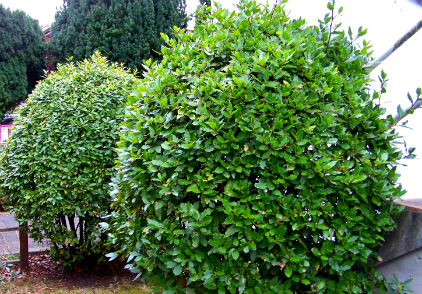1. Replace summer annuals with winter bloomers if the frost has
burned them. Top performers are dianthus, flowering kale, flower-
ing cabbage, pansies, snapdragons, violas, and stock. Add some
rich compost and bone and blood meal to the soil to give the new
plants a boost.
____________________________________________________
2. Plant bulbs: There is still plenty of time to plant those spring
flowering bulbs. Look for narcissus, daffodils, tulips, anemones,
ranunculus, jonquils, and muscari.
____________________________________________________
3. Cut back perennials: If the frost and freezing weather has dam-
aged the tops of your flowering perennials, cut them back to just
above ground level and mulch with compost and pine-bark mixed.
This will conserve soil moisture and keep the roots healthy and
warm.
____________________________________________________
4. Choose a living Christmas tree: This is the season to bring a tree
indoors for the holidays. Why not choose a living one that you can
add to your landscape in January. Some good choices: Allepo pine,
Arizona blue-ice cypress, deodar cedar, blue point juniper, and
Italian stone pine.
____________________________________________________
5. Rake leaves: Get outside, do some raking and inhale some of
that lovely chilly winter air. Remember, un-raked leaves can dam-
age your lawn, especially if they become wet.
____________________________________________________
6. Start a compost pile: Please don’t send those leaves (mentioned
in 5) to the landfill. Use them to build a great big compost heap.
____________________________________________________
7. Move tropical plants inside… or they will die. Mandevilla, plum-
eria, philodendron, ficus, bougainvillea, and hibiscus will all perish
if allowed to freeze. Put them in a garage or greenhouse, and provide
as much light and ventilation as possible; water when dry through-
out the winter. If you can’t carry them in, have some row cover
(freeze cloth) close at hand.
____________________________________________________
8. Care for fruit trees: Spray them and look after them. Rake all
leaves from around the base. Spray with dormant oil to kill scale
insects. This should also be done on scale-infested shrubs. Inspect
burford holly and euonymous, as they are prone to this.
____________________________________________________
9. Buy a little rosemary tree (trimmed). They are a delight, and
make nice table decorations for Christmas. After the holidays, dig
it into your culinary herb garden as a center point.
____________________________________________________
10. Rest on your laurels: On those super-cold days when it’s too
cold to be outside, curl up by the fire and reflect on your successes
of the past year… and dream up some plans for 2018. A bigger
vegetable patch? Chickens? A koi pond. An evergreen screen
against the traffic? A moon garden? Endless possibilities. And
while we're on the subject of laurels . . .
____________________________________________________
One of the most versatile of all of the small evergreen trees or
large shrubs is sweet bay (Laurus nobilis), also known as bay laurel
or true laurel. (See photo above.)
This evergreen can be grown in full sun, part sun, or in the shade.
One of its greatest and most useful attributes is its delightful aro-
matic leaves which have a great culinary history.
Dating back to Greek mythology, Apollo was depicted wearing a
laurel wreath on his head, representing victory in sporting events.
In ancient Rome, laurel wreaths were symbols of military victories.
The bay laurel grows across the Mediterranean region, from Spain
to Greece. The bay leaf, because of its distinctive flavor and frag-
rance, is used to favor soups, stews, gumbo, fish, Cajun beans, and
Mediterranean cooking.
Bay is easy to grow and can get well over 8 feet in height. It makes
a nice entry plant or a great specimen plant growing in a terracotta
pot. It produces small white flowers and occasionally seed.
Its leaves are a dark green and dense, making this plant a good can-
didate for an evergreen screen. Branches from this plant can also
make an attractive Christmas wreath when woven through a grape-
vine wreath frame. (If you visit Martha Stewart's website you'll be
able to find directions on how to make your own bay laurel wreath.)
Happy gardening everyone! ❦






